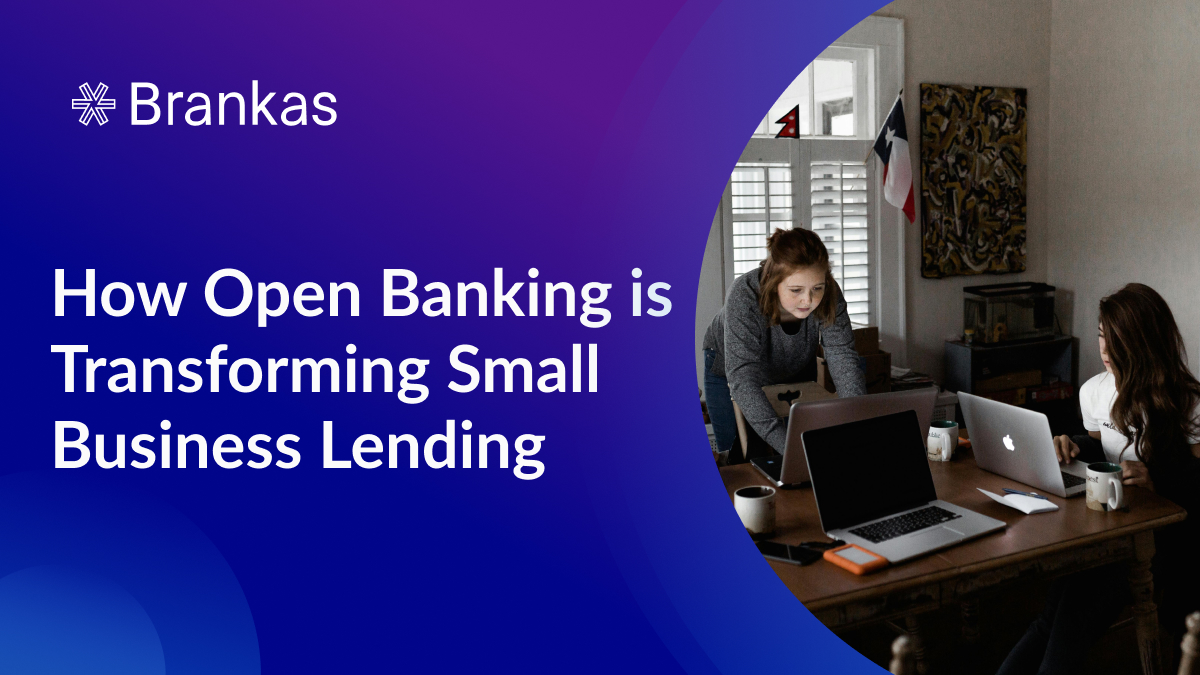Small and medium-sized businesses (SMBs) are the backbone of the global economy. In the Asia-Pacific (APAC) region alone, over 98% of enterprises are considered SMEs. In the Middle East and North Africa (MENA) regions, SMEs represent around 80-90% of businesses in most countries and contribute significantly to GDP and employment.
Despite their critical role, SMBs often face substantial challenges in securing capital. Traditional lending institutions often have qualms about providing SMBs with the necessary funding due to many reasons, including insufficient credit histories, lack of collateral, or outdated manual processes.
This is where open banking comes in. Open banking aims to bridge the funding gap by giving access to real-time, accurate financial data. Read on to learn how open banking is transforming small business lending.
Challenges of Small Business Lending
The hurdles of SMB lending keep businesses from thriving and expanding. The lack of financial opportunities has been identified as a major barrier to growth. Here are the numerous challenges presented by the traditional lending landscape that SMBs are striving to overcome:
Limited Credit History
A limited credit history hampers SMBs’ ability to secure financing. Unlike larger corporations that have established credit profiles, SMBs often lack the extensive financial records that lenders typically rely on to evaluate creditworthiness. The absence of a credit history creates a perception of risk among lenders, making them hesitant to extend loans without sufficient data to support their decision. As a result, SMBs find themselves blocked from capital, which perpetuates a cycle of financial inability.
High Interest Rates
Due to the perceived risks associated with SMB lending, financial institutions often impose high interest on loans as protection. Lenders view SMBs as riskier investments, particularly those with limited credit histories or unpredictable revenue streams. The exorbitant interest rates can be crippling for SMBs, making it difficult for them to manage repayments while also focusing on their growth. SMBs can also be forced to rely on less favorable financing options or use up all their savings. Part of why open banking is transforming business lending is to make this scenario more sustainable in the long run.
Complex Applications
The conventional loan application process for small and medium-sized businesses is often complex and lengthy. Many lenders require extensive documentation, including financial statements, tax returns, and detailed business plans, which can overwhelm SMB owners who may lack the resources or expertise to compile such information. This cumbersome process can lead to frustration and confusion, resulting in high drop-off rates among potential borrowers. SMBs may abandon their applications altogether or miss out on life-changing funding opportunities.
Inadequate Risk Assessment Models
Traditional risk assessment models typically rely on historical data and standardized metrics. Most of the time, these models do not accurately reflect the financial health or operational realities of SMBs. Consequently, lenders may either underestimate the viability of promising SMBs or overestimate the risks associated with others, leading to inappropriate lending decisions. This inadequacy further exacerbates underfunding. Utilizing updated and accurate risk assessment models is an essential part of how open banking helps small business lending.
Late Payments
When clients delay payments for goods or services rendered, it creates a ripple effect that can hinder an SMB’s ability to meet its own financial obligations. This disruption in their cash flow forces them to rely on credit lines or loans, which further strains the business’s finances. Persistent late payments can also damage relationships between suppliers and creditors, making it even more difficult for SMBs to secure favorable terms in the future.
High Rejection Rates
Traditional banks often employ stringent criteria that disproportionately affect these smaller enterprises. Many deserving SMBs are denied access to vital funding based on factors that are beyond the control of the business owner, including economic downturns or industry volatility. High rejection rates ultimately make many SMBs feel discouraged.
Open banking in financial services offers a transformative solution to address these challenges and make small business lending more inclusive.

How Does Open Banking Transform SMB Lending
At its core, open banking leverages technology to create a more transparent and efficient financial ecosystem. Here are seven ways open banking is revolutionizing SMB lending:
1. Real-Time Financial Insights
Open banking lets lenders access up-to-date financial information, such as cash flow and bank transactions, providing a more accurate picture of a business’s financial health. Consequently, SMBs benefit from tailored financing options that reflect their current financial situation.
2. Faster Loan Approvals
Automated data sharing streamlines the lending process, reducing the time it takes for SMBs to get approved for loans. This efficiency helps SMBs secure funding quickly and allows them to respond to market opportunities.
3. Better Risk Assessment
By analyzing transactional data, lenders can more accurately predict repayment behavior, resulting in more equitable loan terms. Lenders can make more informed decisions that reflect the actual risk involved.
4. Personalized Loan Products
With the insights gained from open banking, financial institutions can provide more personalized loan products that suit the needs and goals of SMBs. This customization ensures that loans are aligned with the unique circumstances of individual businesses.
5. Reduced Borrowing Costs
By utilizing improved risk profiling enabled by open banking, lenders can offer lower interest rates to small and medium-sized businesses (SMBs) deemed less risky. This reduction in borrowing costs makes it more affordable for SMBs to access capital and encourages them to invest in growth opportunities.
6. Reduced Late Payments
Open banking facilitates efficient invoice financing and payment tracking solutions that help SMBs receive timely payments from clients. This provides them with better visibility of outstanding invoices, improving their overall financial health.
7. Fraud Prevention
Open banking solutions ensure the secure sharing of financial data. Advanced security protocols and real-time monitoring allow both lenders and SMBs to combat fraud in their transactions, which forges a stronger relationship between them and enhance trust in their financial interactions.
The Future of Small Business Lending in Open Banking
Empowering SMBs through improved access to capital not only benefits individual businesses but also strengthens entire economies. Here’s why empowering SMBs through open banking matters:
Job Creation
SMBs are major employers, especially in developing countries. By enabling these businesses to expand, open banking opens up more job opportunities and supports the livelihoods of individuals and families.
Economic Resilience
When SMBs thrive, the economy becomes less reliant on large corporations. SMBs act as a buffer during economic downturns.
Innovation and Growth
SMBs often drive innovation by introducing new products and services to the market. They also reduce the monopoly of large corporations. With better access to funding, these businesses can invest in research and development and compete with their larger counterparts.
Community Development
SMBs uplift local communities by generating income and improving quality of life. They reinvest profits into their local economies, which contribute to the overall progress of their areas.

Brankas: Advocating for Small Businesses Through Open Banking
Open banking is transforming small business lending by providing solutions that address long-standing challenges faced by SMBs. As we move toward an increasingly digital future, it is crucial for both financial institutions and policymakers to embrace open banking as a means of fostering economic growth through support for small businesses.
Brankas is a true advocate for SMBs by driving this innovation in the open finance ecosystem. Here’s how:
1. Access Financing
By securely sharing their financial data with lenders, SMBs can qualify for better loan terms.
2. Streamlined Payments
Brankas facilitates seamless payment processing, helping SMBs improve cash flow.
3. Optimized Financial Management
SMBs can make data-driven decisions, enhance their operations, and achieve higher levels of productivity.
4. Cost Savings
Save time and money while building any financial use case with our market-leading APIs.
With the right tools and partnerships, SMBs can overcome traditional barriers and position themselves for success.
Contact us to learn more about our open finance platform in the APAC and MENA regions. You can also request a free demo.
